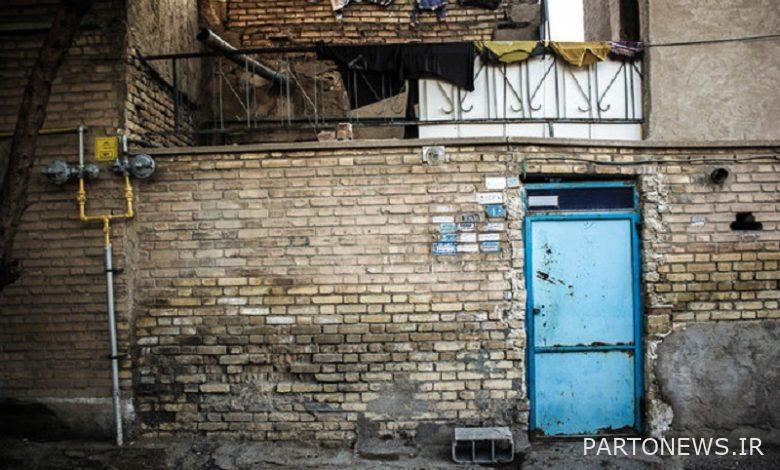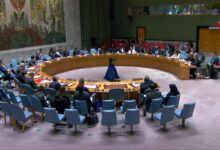The node of renewal of worn out tissues was blinded

According to Tejarat News, the unlocker of the modernization process Worn textures A city was identified.
the world of economy He wrote, studies about the failure factors of policies for the renovation of dilapidated structures in recent years until now, from the cancellation of capital extortion permits from old Tehran and the middle core of other cities with the key of “density” as the main basis of the plan to transfer the housing base from areas saturated with apartments to areas with high demand and It informs about the lack of supply.
Meanwhile, the findings indicate that the permission to extort capital from old Tehran, along with the failed track record of the loan for the renovation of the dilapidated structure, has led to the transfer of the house building base in the capital and other cities to the agenda of the housing policy maker.
The investigations show that, along with a fake and ineffective red carpet, which has been the main path of renovation in recent years. Worn textures It was introduced, there is a main channel for providing housing in the middle and inner cores of cities, which has been neglected so far and is one of the most important reasons for the lack of attractiveness of these areas for construction investors.
Record of failed housing renovation loans
The results of the studies show that, while the housing policy maker, in all the past years, by applying the ineffective program of paying renovation loans to construction applicants in dilapidated contexts, he has actually taken a detour in this field, which on the other hand, is a license to steal capital from Tehran. In the past, it has been continuously exported to areas saturated with construction.
Although the financing of builders and applicants for housing renovation in dilapidated structures is one of the main foundations of the renovation process in the inner and middle cores of cities, on the one hand, the inefficient form of this loan and the special characteristics of construction investment in these areas have practically led to the registration of a failed record for renovation loans. Is.
In such a way that the situation of housing production and supply in the main front of construction investment is critical. Dilapidated urban structures are the main front of construction investment due to three important reasons.
First of all, these areas are places where it is possible to build low-cost housing to meet the needs of consumer applicants for residential units, and they have always been welcomed by this group of applicants; In addition, these areas are actually the constituents of old Tehran, which contain the density and a significant share of the city’s population.
On the other hand, due to the age of residential units and other urban buildings and superstructures in these neighborhoods, in terms of increasing the safety factor of citizens’ residence, these areas and the existing residential units in them should be renovated immediately.
In the third place, at the same time as the jump in housing prices peaked, especially from 2018 onwards, these areas became a new place and destination for housing consumers who were previously housing applicants in consumer areas located in the northern half of Tehran, and a significant group From this group, housing applicants were directed to these areas.
What is the reason for the lack of progress in the project of renovation of worn out tissues?
Despite the special status and important position that the areas located in the worn-out urban tissues have, but the process of renovation and providing housing in these neighborhoods is not in a good condition.
An important and root cause related to this issue is that in all the past years until now, the housing policymaker, according to his own interpretation and inference, considered the payment of the renovation loan as the main driver of the renovation process and other important aspects that can lead to motivation. It has neglected the builders and investors of construction to enter the renovation supply of these neighborhoods.
Meanwhile, the failure record of the renovation loan in accelerating the supply of housing in worn-out areas shows that this policy has actually failed and faced with closed doors.
Official statistics show that in the last three years, on average, only around 10,000 residential units were built in the country using renovation loans; Meanwhile, this amount should be at least 70,000 residential units based on the total volume of housing construction in the country, which is equivalent to about 20% of all constructions in cities.
Official statistics show that in 2017, a total of 60,400 residential units were built in dilapidated areas of the country, of which only 11,500 units received renovation loans.
In 2018, out of a total of 47,000 renovated residential units in neighborhoods and run-down urban areas, only 11,250 residential units were built with renovation loans.
This amount in 2019 is equivalent to the renovation of only 8,000 residential units with renovation loans out of a total of about 50,000 renovated units in the country’s dilapidated structures.
These statistics show that in addition to the fact that the circulation of housing construction and renovation in dilapidated structures is much less than what should be renovated every year in accordance with the legal obligations and existing necessities, the renovation loan actually plays a significant role in the same amount of construction done. It has not been in the worn-out neighborhoods of the city.
In fact, in the circumstances that the housing policy maker in the past years mentioned the renovation loan tool as the unlocker of the renovation flow and the driving factor of housing supply in these areas, but the facts show that the lock of housing renovation with loans has not been opened.
Bigger lock than financing
Surveys on the issue of renovation of worn-out structures in the country’s cities indicate that there is a bigger lock than financing with the use of loans, in the way of renovation of worn-out structures.
In fact, although the issue of proper financing and proper government support in this field is one of the requirements to accelerate the process and flow of modernization, but the issue of loans and financial resources is not the whole story.
Rather, there is a bigger lock than a loan in the path of renovation, which needs to be opened as a priority. This lock is actually related to the failure to provide a reasonable profit margin due to investment in worn-out structures for builders and construction investors.
The story is that in the process of renovating the dilapidated tissues of Tehran and other cities, some restrictions in line with the application of some urban planning rules and regulations have reduced the motivation of builders and construction investors to enter these areas and on the other hand, their thirst to work in these areas Unworn city and saturation of construction has increased.
In the dilapidated context of Tehran and other cities, considering the density and parking restrictions, builders and construction investors are not very eager to enter these neighborhoods for renovation.
Because the profit margin they expect from construction is often not provided; In fact, it is not possible to implement the construction partnership formula to obtain the reasonable and expected profit margin of the builders, which can compete with the construction and investment in the northern areas of the city.
For example, in the city of Tehran, builders in normal and non-worn-out areas can receive a construction permit at least for the construction of 4 floors, while this amount is equivalent to 3 floors in worn-out areas and for small-sized plaques.
This is despite the fact that in accordance with urban planning rules, parking should be provided for at least half of the units built in these areas.
Besides this issue, it is possible for investors to get high building density to build more floors in areas saturated with apartments. Together, these two factors have led to the issuance of capital extortion permits from worn-out structures to northern areas saturated with apartments.
In fact, it has acted as an obstacle in the way of capital entering worn-out tissues and directed these capitals towards the northern regions.
Statistical document of urban capital embezzlement
In a study conducted by Fardin Yazdani, a housing expert and his team, a statistical document of urban capital theft from worn-out fabric to areas saturated with residential apartments has been presented.
According to the statistics presented in this research, from 2009 to 2018, while in the first 5 districts of Tehran, an average of 45,000 residential units were built each year in each district with the granting of additional density permits, this amount was for the 9 districts. Up to 21 Tehran (Old Tehran), there were around 14 thousand units.
This shows that the density permit given to areas saturated with apartments based on the number of additional units was 3 times higher than the southern and high-demand areas.
Granting permission for additional density on a significant scale to the northern areas of the city, along with the restriction of granting density in worn-out tissues and southern areas, has led to a lag in the supply compared to the demand for housing in high-demand areas of Tehran.
All this has caused that in these years, 41% of all building permits of Tehran city were issued only in the first 5 districts of the city, while the share of 12 southern districts of Tehran was only 36% of all constructions.
In addition to the fact that the number of these areas is more than twice that of the northern half of Tehran, due to the higher population density, the need for housing and the demand for housing in these areas are also more than the first 5 areas of the city. But practically, the construction and supply of housing in these areas is much less and more limited than the northern areas of Tehran.
Lower profit margin in housing demand pole
Meanwhile, the profit margin of builders and construction investors in the southern and high-demand areas of the capital, which are actually the consumption demand pole of Tehran, is significantly lower than the construction profit margin in the northern half of Tehran.
Estimates show that the average profit margin of builders in the northern areas of the city is about 37% and in the southern areas is 28%.
All these statistics show that what should have been considered as the missing link in the renovation of worn-out structures in the past years has been neglected by the housing policy makers and instead of a fake red carpet called renovation loan instead of the original plan and effective channeling to accelerate The modernization process is widespread.
Amendment plan on the agenda
But the evidence shows that the plan to transfer the housing base has recently been placed on the agenda of the government and the trustee of housing and urban development.
Apparently, in the city of Tehran, a permit has been approved in the Article 5 Commission, according to which the density of buildings on small-sized lands will be increased by one floor, and in this way, a suitable incentive will be created to attract investors and builders to these areas. Besides, with this action, the willingness of the owners of dilapidated units to participate will also increase.
Recently, it has been heard that the government has designed and approved an urban development incentive package to encourage builders and construction investors to enter the field of renovation of dilapidated structures.
The findings show that the main support of this urban planning incentive package is nothing but the modification of density and parking regulations for the construction of worn-out structures.
Investigations show that this change of procedure and the revocation of capital embezzlement permit from old Tehran to the northern areas saturated with apartments can be beneficial to areas that are susceptible and have the capacity for construction.
These areas happen to be the main focus of housing demand, which have been faced with the lack of supply commensurate with the demand due to lack of attention to the main and key issues in the past years.
If the rules of urban development such as the requirements and restrictions of density and provision of parking in these areas are modified, it seems that it can bring the flow of construction investment in the city, which had turned into an inverted flow, into the main path and correct this flow.
That is, a significant part of the construction funds that have been directed to the areas saturated with apartments will be brought into the areas facing a lack of supply corresponding to the needs of the most demanding housing demand.

